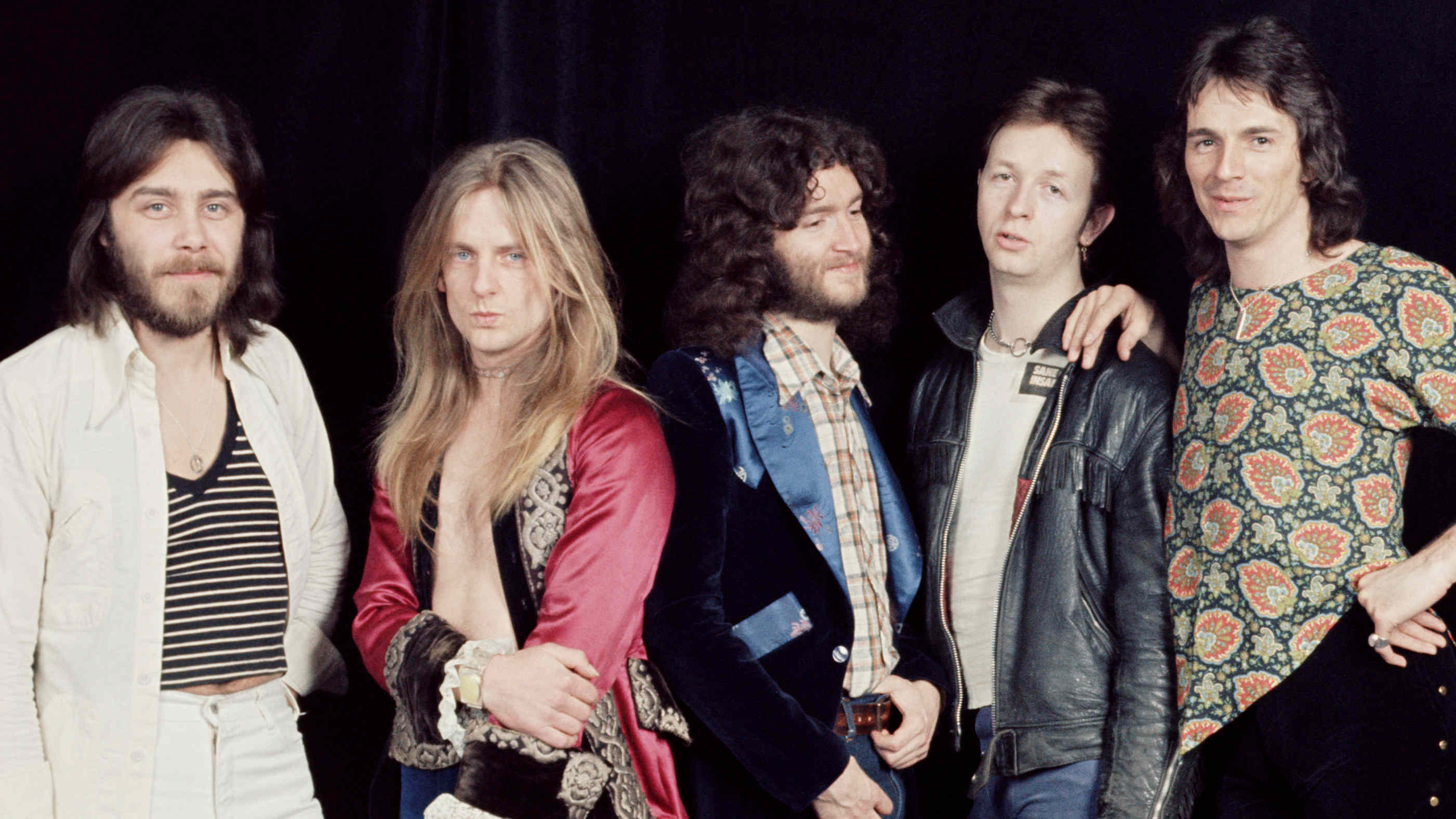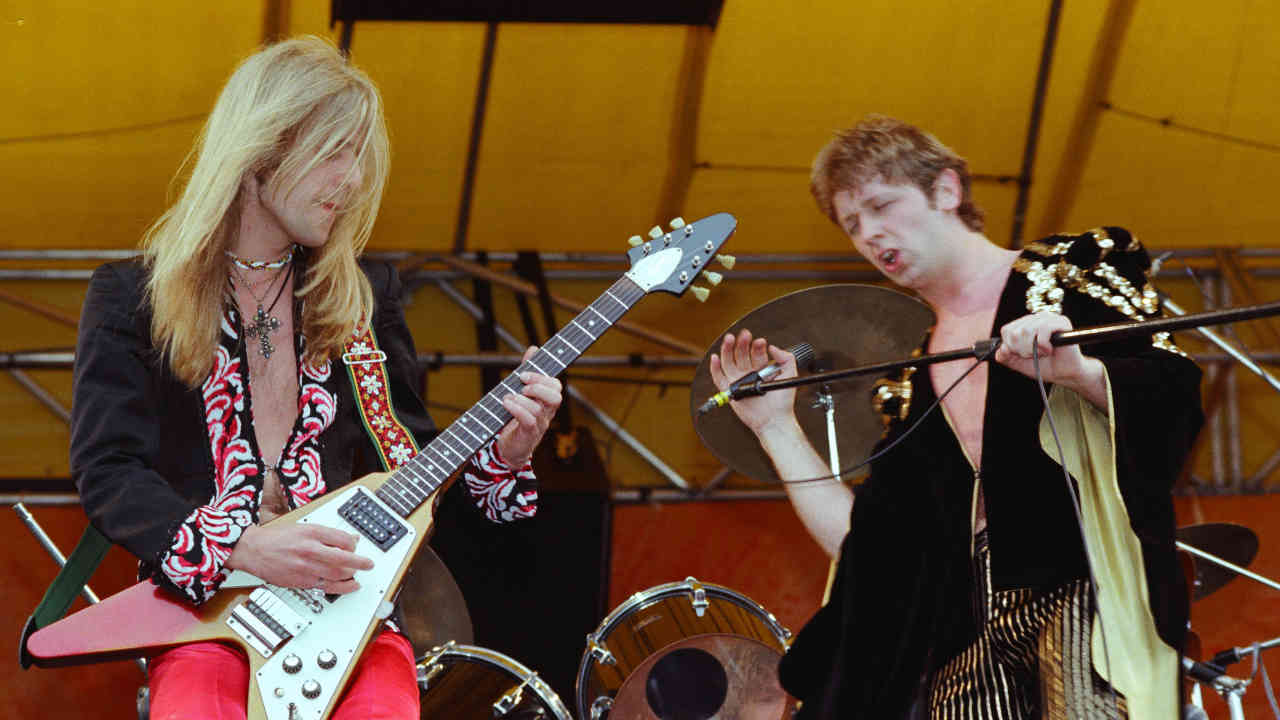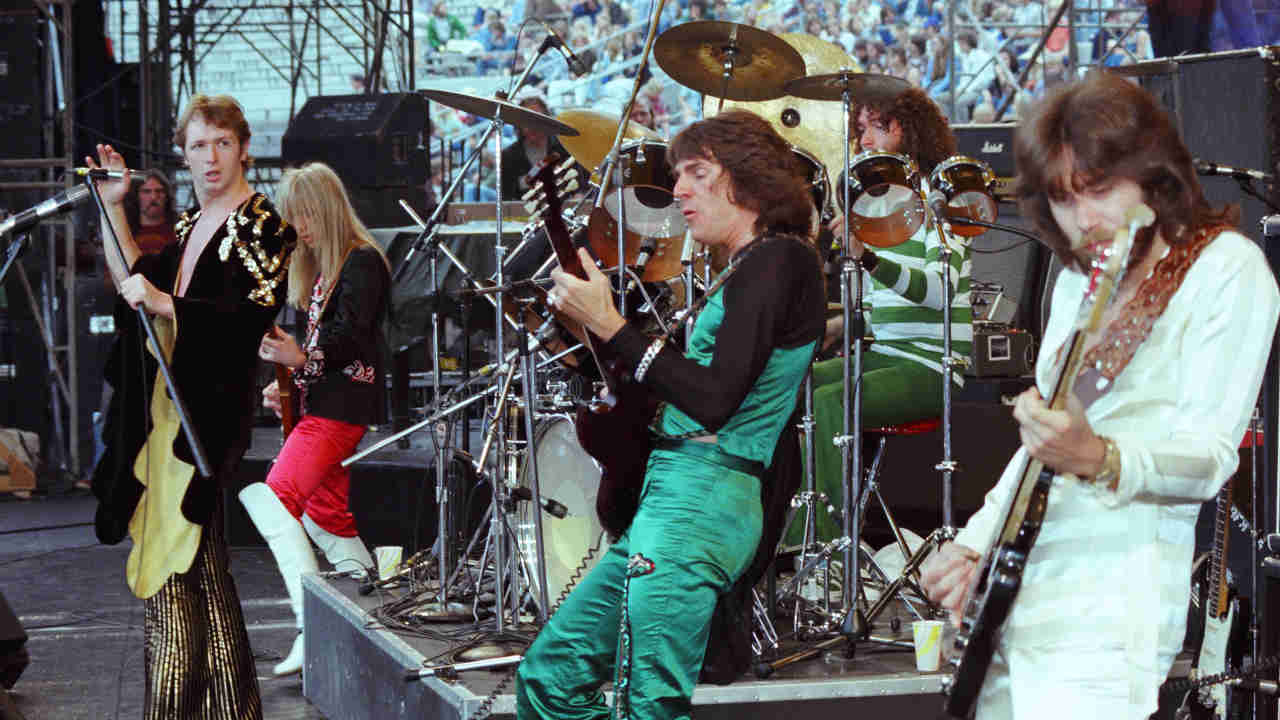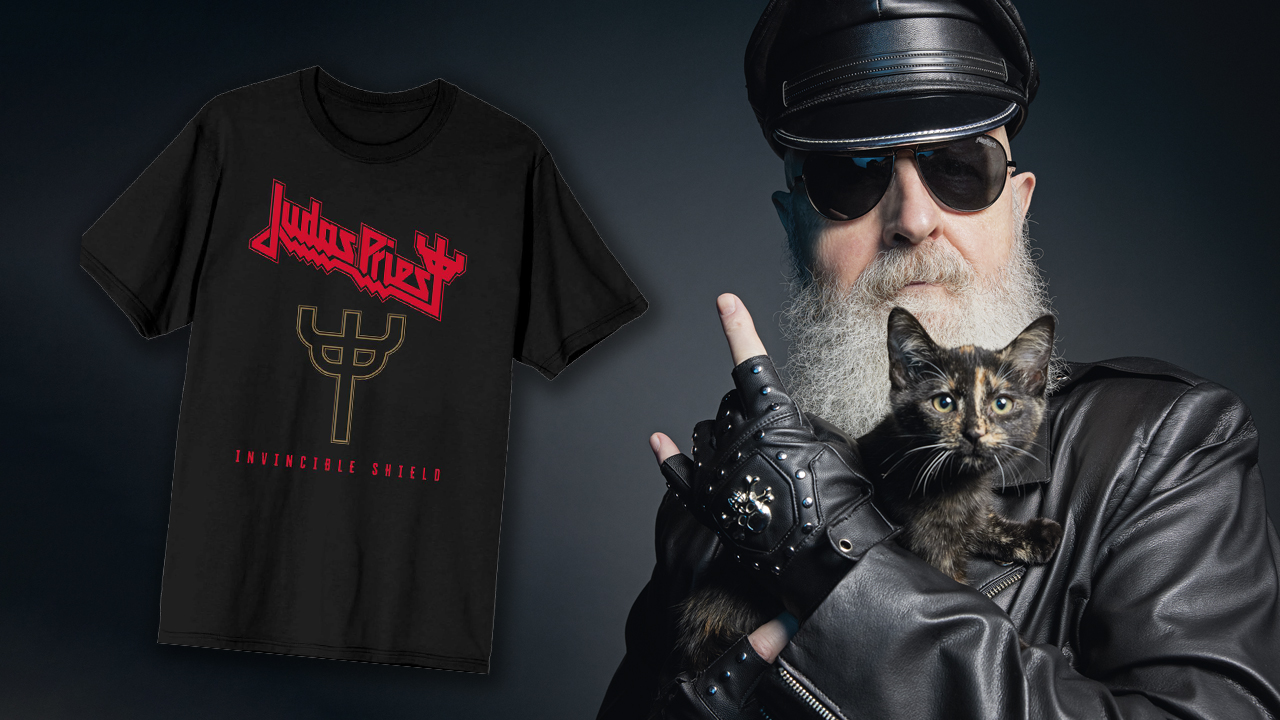
Judas Priest’s patchy debut album, 1974’s Rock Rolla, failed to set the world on fire, but follow up Sad Wings Of Destiny was the work of a band finding its identity. Released on March 23, 1976, it featured such early Priest classics as The Ripper, Tyrant, Genocide and the mighty Victim Of Changes - the latter of which still features in the band’s live show today. In 2008, singer Rob Halford and guitarists Glenn Tipton and KK Downing (who left the band in 2011) talked Metal Hammer through the story of this landmark metal album.
While Black Sabbath virtually created the heavy metal genre, it was Judas Priest who gave it a shape and focus in the mid-70s. Theirs was the music springboard from which others would catapult into legend.
Priest started in 1969, when guitarist KK Downing and bassist Ian Hill decided to take their childhood friendship into music. A year later, singer Al Atkins came into the picture. He joined the duo after his previous band had split up. Crucially, he persuaded the pair to take on his erstwhile outfit’s name: Judas Priest, named after the Bob Dylan song The Ballad Of Frankie Lee And Judas Priest. With Glenn Tipton from The Flying Hat Band on guitar and Alan Moore on drums, the young band toured the local area, supporting the likes of Thin Lizzy and Budgie.
In 1973, both Al and Alan left due to financial problems. One Rob Halford stepped forward to front the band, while John Hinch was brought in on drums – one of many to occupy the stool over the years. John and Rob had already worked together in a band called Hiroshima.
The same year, Priest signed to the Gull label and recorded debut album Rocka Rolla with producer Rodger Bain. It wasn’t an auspicious start. The release received a lukewarm response so, when the band began work on the next one, the world wasn’t exactly expecting a portentous moment. But that’s exactly what happened. One that would invent the concept of heavy metal as we know it…
“As time passes, the heavy metal world does look back at Sad Wings Of Destiny as being a classic,” says Rob of the album that became the fulcrum of their career. “That happened many years ago now. We in the band accept that sort of response with gratitude.”

Two significant changes happened in the Priest camp as they prepared for the vital second album. Firstly, the decision was made not to work with Rodger Bain again.
“I don’t want to be nasty about Rodger, because he is a good producer and has done lots of quality albums,” recalls Tipton. “But I remember going home and listening to Rocka Rolla and being gutted at how disappointing it sounded. The songs were good, and many have stood the test of time, but it wasn’t well recorded.”
“The fact is that we wanted to grow as a band,” adds Rob, “so the logical thing was to change producers.”
In came the combination of Jeffrey Calvert and Max West, a pair not exactly renowned for their rock credibility. Jeffrey had worked at Morgan Studios in London, which had connections with the Gull label, while Max’s real name was Geraint Hughes Wyn. Amazingly, they were to have their own number one single in the summer of 1975, under the name of Typically Tropical (the song in question being the flighty cod-calypso Barbados), and would later write the Sarah Brightman disco hit I Lost My Heart To A Starship Trooper. All in all, not really the sort of producers one might expect to be involved with the young Priest.
“Gull suggested we work with them,” explains Rob. “As a band we felt that we now had the knowledge to get what was required from the new record. In addition, both Jeff and Max understood that we were gonna be very involved in this album, which wasn’t totally the case first time around.”
A very young engineer called Chris Tsangarides got his big break on the project, before going on to work with some of the biggest names in rock during the 1980s and beyond (he would produce Painkiller for Priest in 1990).
“Chris apparently heard me doing the solo on Victim Of Changes and loved it so much that he pleaded to work on the record,” laughs KK.
There have been suggestions that Rodger had imposed his own will on the band’s debut, even going as far as leaving off Tyrant, Genocide and The Ripper, all of which were said to be part of the band’s live set prior to Rocka Rolla. However, Rob refutes this view of history.
“I don’t recall any of these songs being played live before the debut,” he insists. “In fact, the only track from Sad Wings Of Destiny that we were doing onstage before that album was recorded was Victim Of Changes. All the others were newly written.”
The second major change came with the departure of John Hinch (he would re-emerge a few years later, managing cult New Wave Of British Heavy Metal band Jameson Raid), and the return of Alan Moore.
“Alan came back for the same reason that we decided a change of producer was necessary,” believes Rob. “Any new band has to constantly look at all levels of musicianship and consistency, if you’re determined to progress and get to the next level.”
In addition, the quality of the material was unquestionably several parsecs removed from what had gone before. The likes of the aforementioned Victim Of Changes, Tyrant, Genocide and The Ripper have become classics that stand loud and proud more than 30 years on.
“I think the writing combination of myself, KK and Rob really started to blossom here,” says Glenn. “We’d gotten to know each other a lot better after the experience on Rocka Rolla, and we’d grown in confidence. To me, this was the real start of Priest as everyone knows us.”
Despite Glenn’s belief that this marked the real birth of the Halford/Tipton/Downing writing partnership, in truth only three songs on Sad Wings… – Genocide, Island Of Domination and Deceiver – carried that famed writing credit. Although Victim Of Changes was predominantly written by the three, with input from Al Atkins, rumour has it that this epic was a combination of two other songs, namely Whiskey Woman (which dated back to the very early days of Priest, pre-Rob Halford) and Red Light Lady which Rob had brought with him from previous band Hiroshima. The frontman, though, recalls things differently.
“We always titled it Victim Of Changes, it never had any other title. I suppose that confusion might have happened because Whiskey Woman is the opening phrase.”
The band went to the famed Rockfield Studios in Wales to record what was definitely a crucial album. Having worked under a highly restrictive budget for Rocka Rolla, now things seemed to open up a little.
“We chose to go to Rockfield because it was a well-known, and heavily used, studio at the time,” says Rob. “It was also a residential place, which allowed us to stay together and concentrate fully on what we were doing.”
KK, though, doesn’t recall those times as being particularly financially viable for the band. In fact, he has a sense of bitterness about the way things were turning out.
“We were broke, simple as that,” he says. “While we were recording the album, the money dried up. We’d gone from Rockfield to Morgan Studios in London, but our tab ran out. We couldn’t even afford food and drink – that’s how bad things had become. Here we were, in one of the most famous studios around – with the likes of Black Sabbath and UFO also recording – yet living on the breadline.”
In all, Judas Priest spent four months working on Sad Wings Of Destiny until July 1975. They took the occasional break, but for the most part sank everything they had into making the album as good as it could be.
“It was a lot of effort, and it really took its toll on us,” admits Rob. “But then none of our albums have been that easy to make. They have all been about blood, sweat and tears… but that’s the way it should be for any band. Give anything less and you get a poor end result.”

The album was released on March 23, 1976, and gave the band their first ever UK chart success, as it peaked at a modest number 48 (although it didn’t chart in America at the time, the record has now sold over half-a-million copies there). But it was a step forward from the failure of Rocka Rolla, and one cemented by a heavy touring schedule.
All of which meant the band were now really ready for major success. But it wasn’t to happen with Gull Records. There had been a growing unrest with the label’s attitude, and one that came to a head when the money ran out in the studio, leaving the Priest barely able to live. Now, underscores Rob, things were about to be resolved.
“One day we went to the Gull office and said, ‘Look, we want to be a great heavy metal band and show the world that this can be done. It would really help if we could get, like, 25 quid each per week, so that we can put our heart and soul into writing’. What dosh we’d made from touring at the time went to pay off the bills. They refused, so we left.”
“Even though we were playing a lot of shows in those days, we’d gotten to a stage where unless Gull gave us some financial backing, we’d have to come off the road. It was ridiculous,” emphasises KK. “In fact, things were so bad we all had to get part- time jobs. I was screwing bolts into a ceiling. Gull didn’t seem to care what we did touring-wise. Crazy! So, eventually we had to leave, and signed to CBS [now Columbia].”
“Priest has been through so many ups and downs during our life,” adds the singer. “We weathered the storms, from labels to outside attitudes and opinions. We’ve always maintained: we are a heavy metal band, and if you don’t like us or won’t back us… fuck off!”
Sad Wings Of Destiny was to be the band’s last album for Gull, and it has been reissued on numerous occasions over the decades. It remains a landmark release, unquestionably the record that kickstarted the whole metal style. In fact, one could make a strong case for suggesting that this is the blueprint for everything that’s happened since.
“You can hear and sense the growth from Rocka Rolla,” concludes Rob. “Most bands hit their stride on a second release. You learn so much from the first experience. Today, all of us in Judas Priest rate it as a piece of pure metal magic, and are still very proud of what we did.”
First published in Metal Hammer issue 177
Judas Priest are on the cover of the current issue of Metal Hammer magazine, featuring a brand new interview with Rob Halford about new album Invincible Shield. Order our limited edition bundle, which comes with an exclusive Invincible Shield T-shirt








